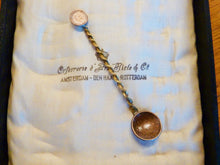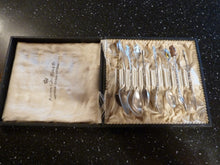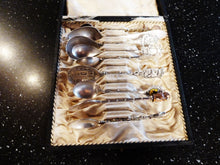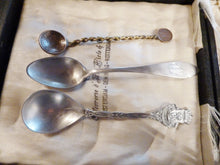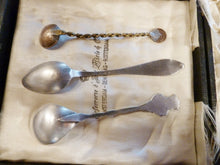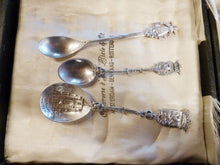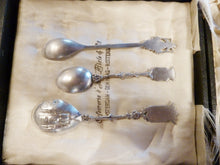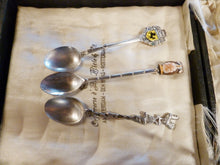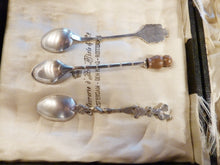
Important Spoon Collection, Dutch, Including Dutch Resistance Coin Spoon
I bought this collection of souvenir spoons at a Vide Grenier, the French equivalent of a boot sale, from a Dutchman who was selling off items from the family.
All are Dutch except one from Stuttgart and all are either solid silver or heavy silver plate except one and that one is very special indeed and it the reason why the first two photographs show this spoon.
The Los Angeles Museum of The Holocaust was founded in 1961 by a group of Holocaust survivors and in that museum is a spoon exactly like this one albeit that one is of silver and this one in copper. The reason it is there is because the Dutch resistance made these spoons in the 1940s, members of the Resistance made "coin spoons" — spoons consisting of twisted wire and two Dutch coins — and distributed them among the group as a means of identifying each other. The secret eventually got out, so Resistance members then sold the spoons to raise money for the Underground movement.
The date on the coins used to make this spoon is 1938 which perfectly fits the era. and I beleive that the father of the man I bought it from would have been a memebr of the Dutch resistance. That resonates with me as both my father and my uncle were members of the French resistance.
There then three pretty silver plated spoons from areas of Holland that I cannot identify.
A souvenir spoon from Stuttgart marked 100 so it is finest heavy silver plate.
A hallmarked silver spoon from De Oldehove Leeuwarden which is an ancient and unfinished church with a leaning tower.
A silver plated souvenir spoon from Terschelling which is an island of the norther coast of Holland.
A hallmarked silver spoon which is monogrammed L.V.
Finally what appears to be a very modern silver plated spoon with an owl on top.
The case in which the collection is housed is from the world famous artistic jewelers Miele & Co who started in 1870. They had offices across the world at their height and a catalogue of their wares sold at auction for 220 euros.
I bought this collection of souvenir spoons at a Vide Grenier, the French equivalent of a boot sale, from a Dutchman who was selling off items from the family.
All are Dutch except one from Stuttgart and all are either solid silver or heavy silver plate except one and that one is very special indeed and it the reason why the first two photographs show this spoon.
The Los Angeles Museum of The Holocaust was founded in 1961 by a group of Holocaust survivors and in that museum is a spoon exactly like this one albeit that one is of silver and this one in copper. The reason it is there is because the Dutch resistance made these spoons in the 1940s, members of the Resistance made "coin spoons" — spoons consisting of twisted wire and two Dutch coins — and distributed them among the group as a means of identifying each other. The secret eventually got out, so Resistance members then sold the spoons to raise money for the Underground movement.
The date on the coins used to make this spoon is 1938 which perfectly fits the era. and I beleive that the father of the man I bought it from would have been a memebr of the Dutch resistance. That resonates with me as both my father and my uncle were members of the French resistance.
There then three pretty silver plated spoons from areas of Holland that I cannot identify.
A souvenir spoon from Stuttgart marked 100 so it is finest heavy silver plate.
A hallmarked silver spoon from De Oldehove Leeuwarden which is an ancient and unfinished church with a leaning tower.
A silver plated souvenir spoon from Terschelling which is an island of the norther coast of Holland.
A hallmarked silver spoon which is monogrammed L.V.
Finally what appears to be a very modern silver plated spoon with an owl on top.
The case in which the collection is housed is from the world famous artistic jewelers Miele & Co who started in 1870. They had offices across the world at their height and a catalogue of their wares sold at auction for 220 euros.










